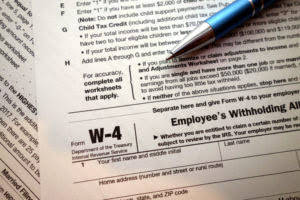Non-cash items such as write-downs or impairments and stock-based compensation also affect the account. Any item that impacts net income (or net loss) will impact the retained earnings. Such items include sales revenue, cost of goods sold (COGS), depreciation, and https://www.freconsultants.com/2020/09/08/7-4-prepare-flexible-budgets-principles-of/ necessary operating expenses.
- They reflect claims against a company’s assets and are divided into current (due within a year) and long-term liabilities.
- Both revenue and retained earnings are important in evaluating a company’s financial health, but they highlight different aspects of the financial picture.
- One common application is reinvestment in the business itself, which can involve purchasing new equipment, upgrading technology, or expanding production facilities.
- Retained earnings, as a component of owner’s equity, represent the owners’ claim on a portion of the company’s assets, not the assets themselves.
- Your bookkeeper or accountant may also be able to create monthly retained earnings statements for you.
- The expanded accounting equation goes hand in hand with the balance sheet; hence, it is why the fundamental accounting equation is also called the balance sheet equation.
Are Retained Earnings a Type of Equity?
- Secondly, retained earnings are economic benefits that have already occurred.
- These liabilities are important for assessing a company’s liquidity, which is its ability to meet short-term financial obligations.
- The equity section reflects the ownership interest in the company, which includes contributions from shareholders and accumulated earnings.
- Under a hypothetical liquidation scenario in which all liabilities are cleared off its books, the residual value that remains reflects the concept of shareholders equity.
Finally, the closing balance of the schedule links to the balance sheet. This helps complete the process of linking the 3 financial statements in Excel. The main difference between retained earnings and profits is that retained earnings subtract dividend payments from a company’s profit, whereas profits do not. Where profits may indicate that a company has a positive net income, retained earnings may show that a company has a net loss, depending on the amount of dividends it paid out to shareholders. Retained earnings are the cumulative net earnings or profits a company keeps after paying dividends to shareholders.

Are Retained Earnings Assets or Liabilities?
For instance, accounts payable and short-term debt would appear here, showing the amounts owed to external creditors. This section indicates the company’s immediate financial commitments to outside parties. In contrast, current liabilities are external obligations owed to third parties, such as vendors, lenders, or employees. These liabilities require a future outflow of resources to settle the debt. Retained earnings, however, do not obligate the company to make a payment to an external entity. Instead, they represent capital generated from the company’s own operations that has been kept within the business.
Determine Beginning Retained Earnings Balance
- A company that routinely gives dividends to shareholders will tend to have lower retained earnings, and vice versa.
- Sandra Habiger is a Chartered Professional Accountant with a Bachelor’s Degree in Business Administration from the University of Washington.
- The calculation begins with the retained earnings balance from the end of the previous accounting period.
- This helps complete the process of linking the 3 financial statements in Excel.
- Revenue is the total amount of income generated by the sale of goods or services related to the company’s primary operations.
- This accumulation of profits becomes a part of the company’s equity, which represents the owners’ claim on the company’s assets.
Liabilities are classified as current liabilities or long-term liabilities. If your company pays dividends, you subtract the amount of dividends your company pays out of your retained earnings. Let’s say your company’s dividend policy is to pay 50 percent of its net income out to its investors. In this example, $7,500 would be paid out as dividends and subtracted from the current total.

Differentiating Retained Earnings from Assets and Liabilities

If a share is issued with a par value of $1 but sells for $30, the additional paid-in capital for that share is $29. Retained earnings (RE) are calculated by taking the beginning balance of RE and adding net income (or loss) and then subtracting out any dividends paid. A company’s assets are also grouped according to their life span and liquidity – the speed at which they can be normal balance converted into cash. Let’s say that the net income of your company for the current period is $15,000.
Calculate and Subtract Dividends Paid to Shareholders in Current Period
The expanded accounting equation can be rearranged in many ways to suit its use better. With that being said, no matter how the formula is laid out, it must always be balanced. Retained earnings for a single period can reveal trends in the company’s reinvestment, but they don’t tell you how those funds are used, or what the return on investment is. Looking at retained earnings can be useful, but they’re more valuable when observed over a longer period of time. Retained earnings are actually reported in the equity section of the balance sheet.
- However, other factors impact how much of this balance shareholders will receive.
- To this beginning balance, the company’s net income (or net loss) for the current period is added.
- This is just a dividend payment made in shares of a company, rather than cash.
- A frequent point of inquiry centers on whether retained earnings, a significant component of a company’s financial structure, can be considered a current liability.
- The Retained Earnings account can be negative due to large, cumulative net losses.
- In the same period, the company issued $2.82 of dividends per share, while the total earnings per share (diluted) was $18.32.
- The formula to calculate shareholders equity is equal to the difference between total assets and total liabilities.
Retained Earnings: How to Calculate Them for a Business

Retained earnings are like a running tally of how much profit your company has managed to hold onto since it was founded. They go up whenever your company earns a profit, and down every time you withdraw some of those profits in the form of dividend payouts. Your current retained earnings are the amount calculated during your last financial period. Retained earnings can be used to calculate financial ratios, including debt-to-income and acid-test ratios, which can provide valuable insights into a company’s financial health. Liabilities represent the debts a company owes to its creditors, suppliers, or other external parties. If you’re an investor, you’d want to know more than just are retained earnings liabilities how much they’ve saved.